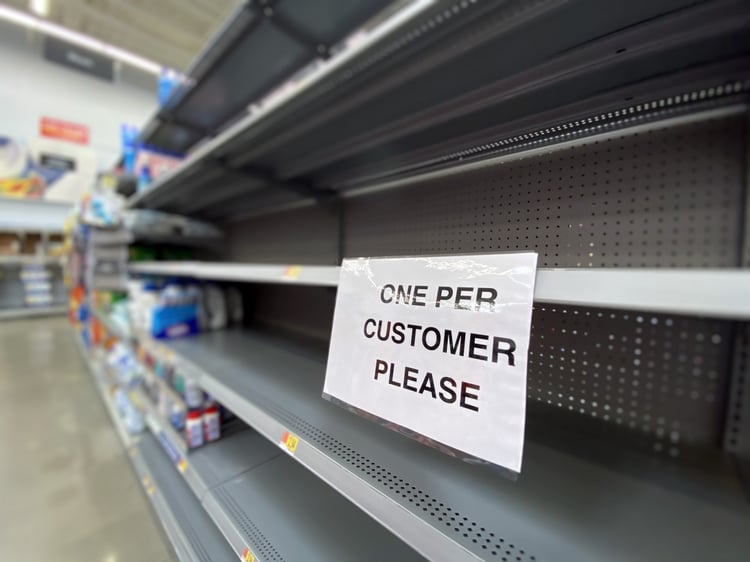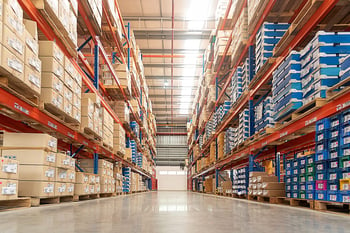 Global supply chains have been pushed to their limits over the past three years, revealing the weaknesses of a complex system that affects everything from toilet paper to computer chips. These disruptions impact more than just daily life — they affect local and national economies and businesses of every shape and size.
Global supply chains have been pushed to their limits over the past three years, revealing the weaknesses of a complex system that affects everything from toilet paper to computer chips. These disruptions impact more than just daily life — they affect local and national economies and businesses of every shape and size.
It used to be a simple matter to order items from across the country or even outsource production to other countries. Now we are experiencing the limitations of these models due to a variety of factors. According to a 2022 Council of Economic Advisers report, the current supply chain is brittle and vulnerable to breakdowns in the face of a pandemic, natural disaster, or war.
Finding ways to recover from the supply chain disruptions will go a long way towards putting domestic and global trade back on firmer footing, improving the customer experience, and improving overall business results. Here is what is causing supply chain disruption and five ways businesses can work to recover from it.
What is Supply Chain Disruption and What Causes It?
 A supply chain is a system of organization, people, and actions that moves products from suppliers to manufacturers to distributors to customers. Different products will involve different supply chains. A smartphone is much more complex than a banana.
A supply chain is a system of organization, people, and actions that moves products from suppliers to manufacturers to distributors to customers. Different products will involve different supply chains. A smartphone is much more complex than a banana.
Supply chain disruption happens when any of the organizations, people, or actions in the process are disrupted. For example, if a farmer can’t get enough workers to harvest raw materials or a factory can’t get parts to fix its machinery, everything further down the line will be impacted.
So what causes supply chain disruptions? Supply chains are so complex that any number of things can create problems. But here are some of the leading supply chain challenges that businesses have to overcome.
Natural Disasters
Earthquakes, flooding, hurricanes, and fires are natural disasters that have led to supply chain disruptions due to destruction, power outages, and emergencies for workers. For example, a Japanese tsunami in 2011 led to temporary factory shutdowns responsible for over half of certain critical auto parts.
Cyber Attacks
Technology is now involved in some parts of the supply chain, which can make it more efficient but also open it up to vulnerabilities. Any weaknesses in the systems can be exploited by hackers who either want to steal data or disrupt the supply chain.
Transportation Delays
Transportation delays can occur due to things like inclement weather, lack of qualified workers, and even increased seasonal traffic on the roadways. Holiday shipments are particularly vulnerable to all three of these factors, even when demand is at its highest levels.
Price Fluctuations
Changes in materials availability, energy prices, and spikes in demand can impact price fluctuations in manufacturing and transportation. This can lead to business disruptions and shipment delays.
Global Pandemics
Few things have caused as much of an impact on the global supply chain as the recent COVID-19 pandemic. When the crisis first hit, it shut down entire supply chains, some of which have yet to recover. Labor shortages in some industries remain, and cargo ships still aren’t back on schedule.
5 Ways to Recover from Supply Chain Disruptions
Supply chain disruptions have become a cost of doing business. It’s no longer a matter of preparing for the unexpected but rather putting new strategies in place that allow your business to meet ongoing challenges and minimize disruptions that will continue to occur. Here are five ways your business can continue to recover from supply chain disruptions.
1. Audit Your Supply Chain
 It’s tough to improve something if you don’t have some type of baseline. The first thing you should do is conduct a thorough audit of your supply chain to identify the areas with the greatest vulnerabilities.
It’s tough to improve something if you don’t have some type of baseline. The first thing you should do is conduct a thorough audit of your supply chain to identify the areas with the greatest vulnerabilities.
For example, you might run several warehouses and rely on a single transportation company. That part of your supply chain is probably weak because you don’t have any backups.
When you audit your supply chain, you can rank vulnerabilities in terms of risk and how vital they are to your business results. Using this information, you can prioritize which items you wish to address first. And supply chain audits should be an ongoing strategy because circumstances can change quickly with one or more of your business partners.
2. Diversify Suppliers
While it’s important to build strong relationships with your business partners, putting all of your business eggs in a single basket is no longer practical. If you want to recover from supply chain disruptions, it’s time to diversify your suppliers.
If all of your inventory is coming from a single supplier, you’ll be stuck when they are unable to deliver due to labor issues or some problem further down the supply chain. Establishing relationships with alternative suppliers will ensure you are able to continue operations when one business partner is limited.
3. Build Backup Inventory
 Just-in-time inventory was the business standard before the COVID-19 pandemic. Now that supply chains aren’t nearly as resilient, it’s a good idea for businesses to think about building a safety net of backup inventory in case there is a disruption or delay in the supply chain.
Just-in-time inventory was the business standard before the COVID-19 pandemic. Now that supply chains aren’t nearly as resilient, it’s a good idea for businesses to think about building a safety net of backup inventory in case there is a disruption or delay in the supply chain.
Every business will need to leverage its insights to determine what the right amount of backup inventory is, which may vary by product and season. Essentially, the strategy is to reserve a specific amount of items to prevent stockouts, so there isn’t a loss of vital sales and customer trust.
4. Create a Contingency Plan
According to Forbes, there’s “no end in sight” for supply chain troubles. Knowing this, it’s important for businesses to have a series of contingency plans in place for when (not if) things don’t go according to plan.
Even with COVID-19 concerns abating, volatility has become commonplace with natural disasters, wars, and ongoing economic uncertainty. Your contingency plans should include how you will approach customers about supply chain disruptions and the steps you can take to get the products you need.
When you create your plan, consider these four strategies:
- Prevention — What measures can you take to mitigate the impact of supply chain disruptions before they happen?
- Preparedness — How can you be ready to spring into action as soon as an event takes place?
- Response — What will your particular response be to each type of disruption?
- Recovery — How quickly and efficiently can you resume normal operations?
5. Improve Your Supply Chain Transparency
Supply chain transparency or visibility has been a major issue, and it won’t be easy to resolve. Transparency refers to how accessible and simple the organizations and processes in the supply chain are to view and analyze. You might know a bit about your suppliers. But what about their suppliers and distributors?
Leveraging technology like RFID tags, warehouse management systems (WMS), and mobile solutions for warehouses and distribution centers, businesses are now allowing real-time data to flow throughout the supply chain. This data about shipping, receiving, inventory levels, and more can help improve communication and restore resiliency in a weakened system.
The COVID-19 pandemic alerted businesses to the many weaknesses in the supply chain. As those shortcomings have persisted over the past several years, it’s become clear that businesses need to take steps to build a more resilient system that will be more efficient and weather future disruptions. These actions will help your business achieve greater efficiencies, improve visibility throughout the supply chain, deliver a better customer experience, and boost overall business results.
